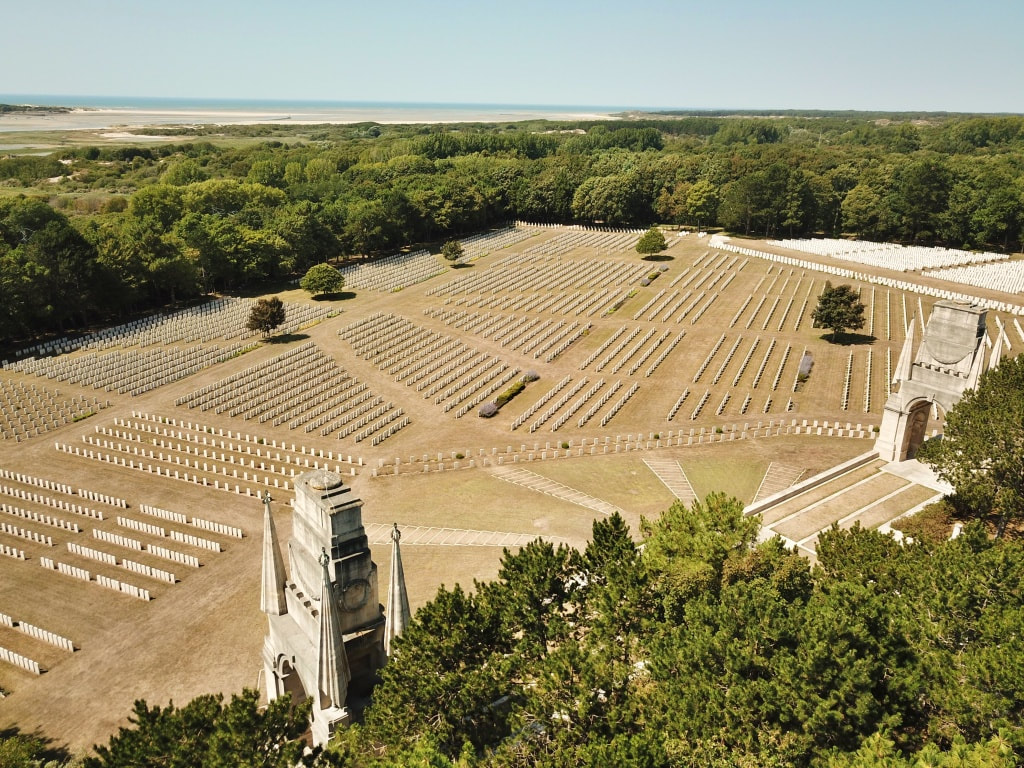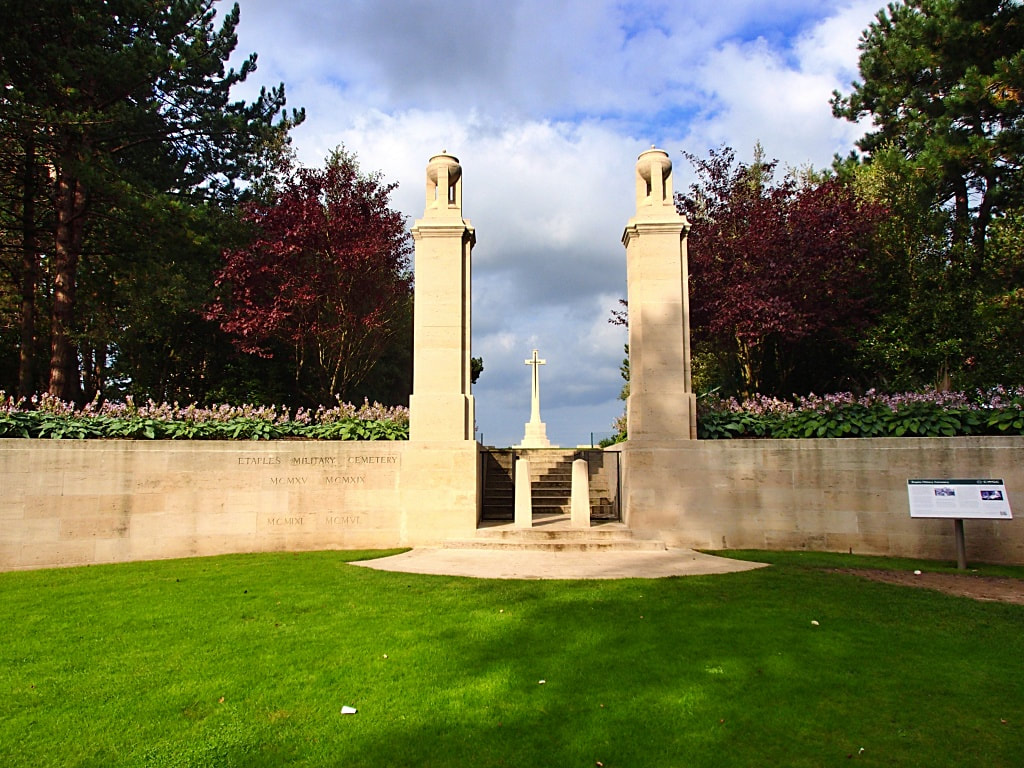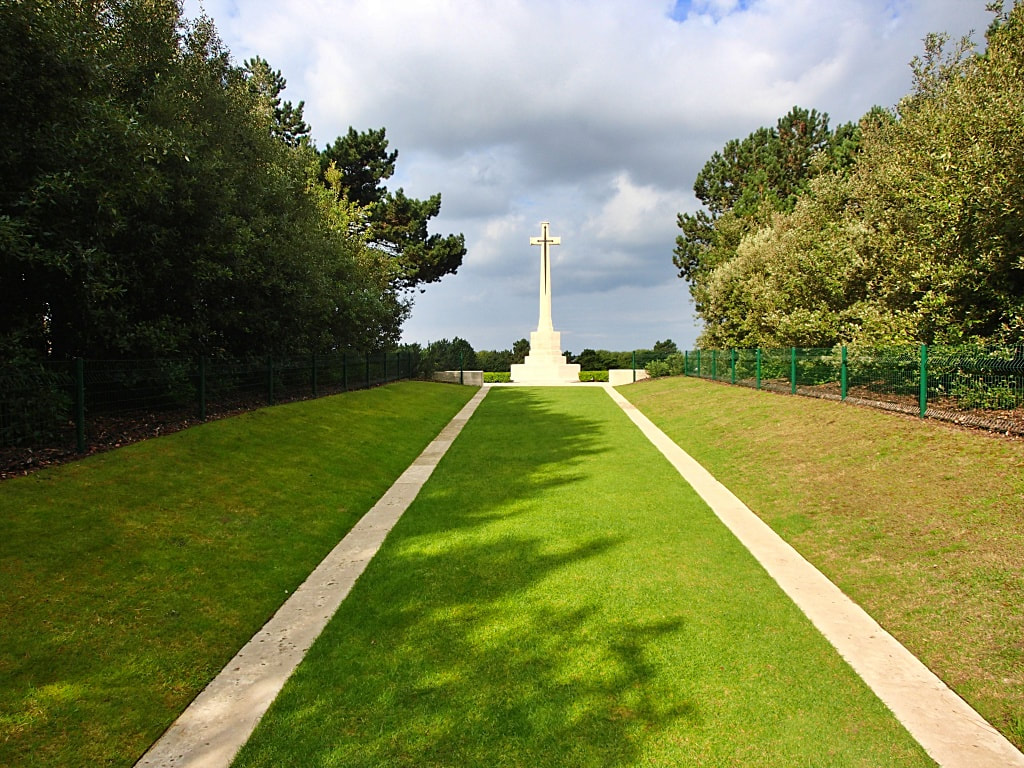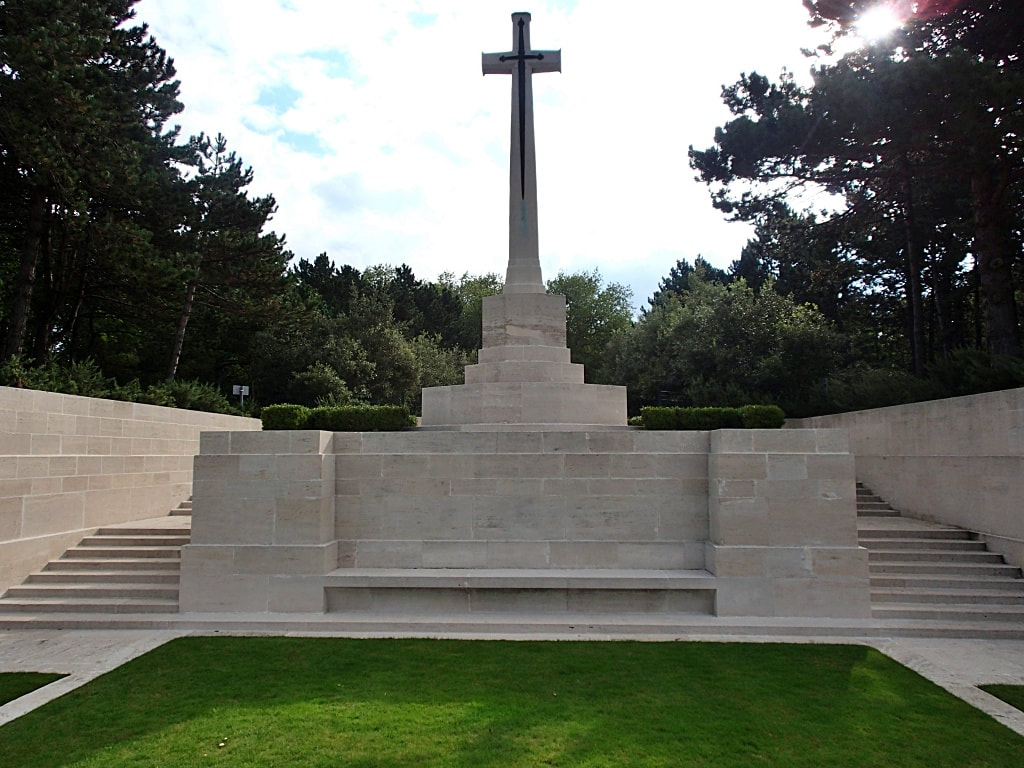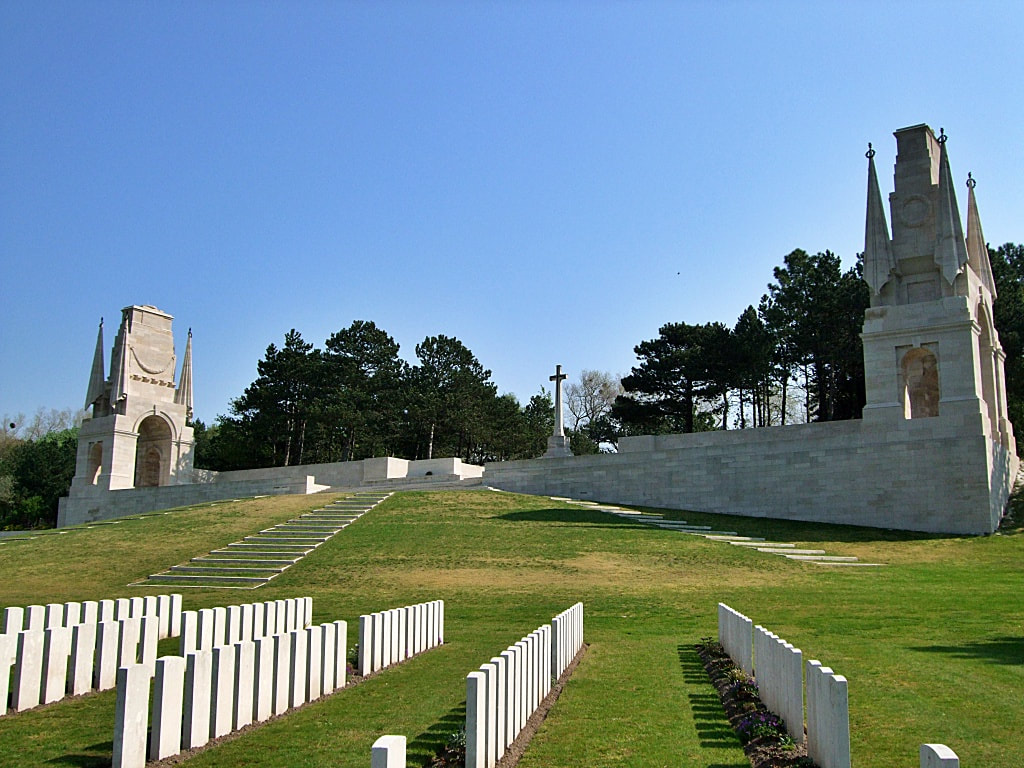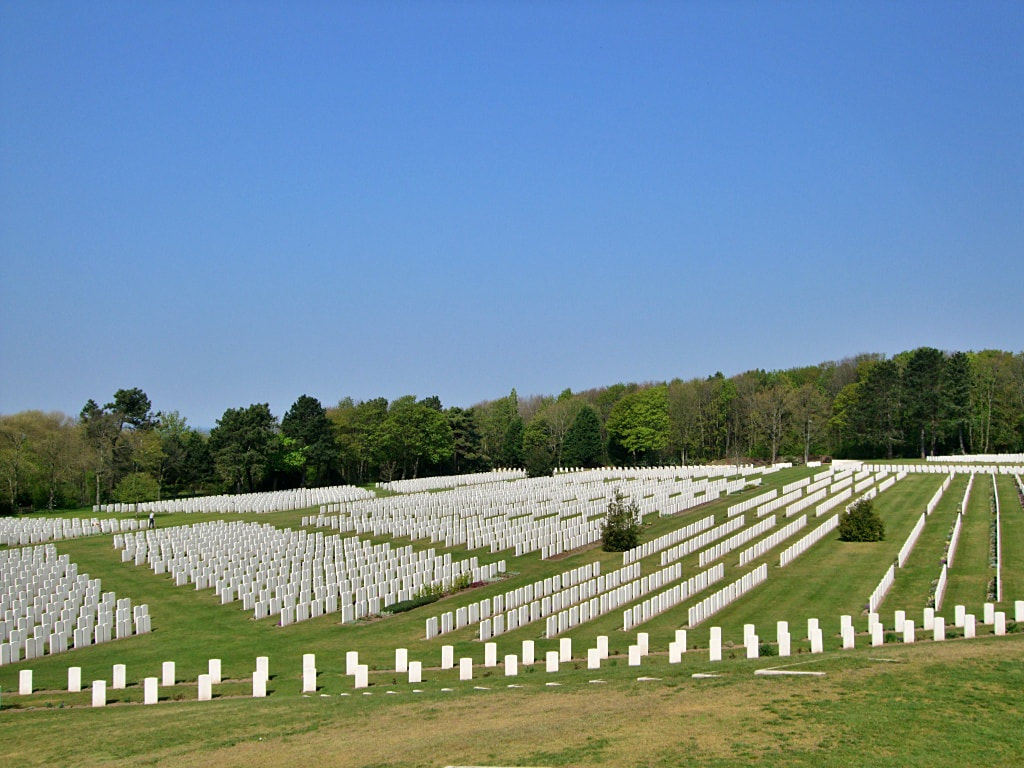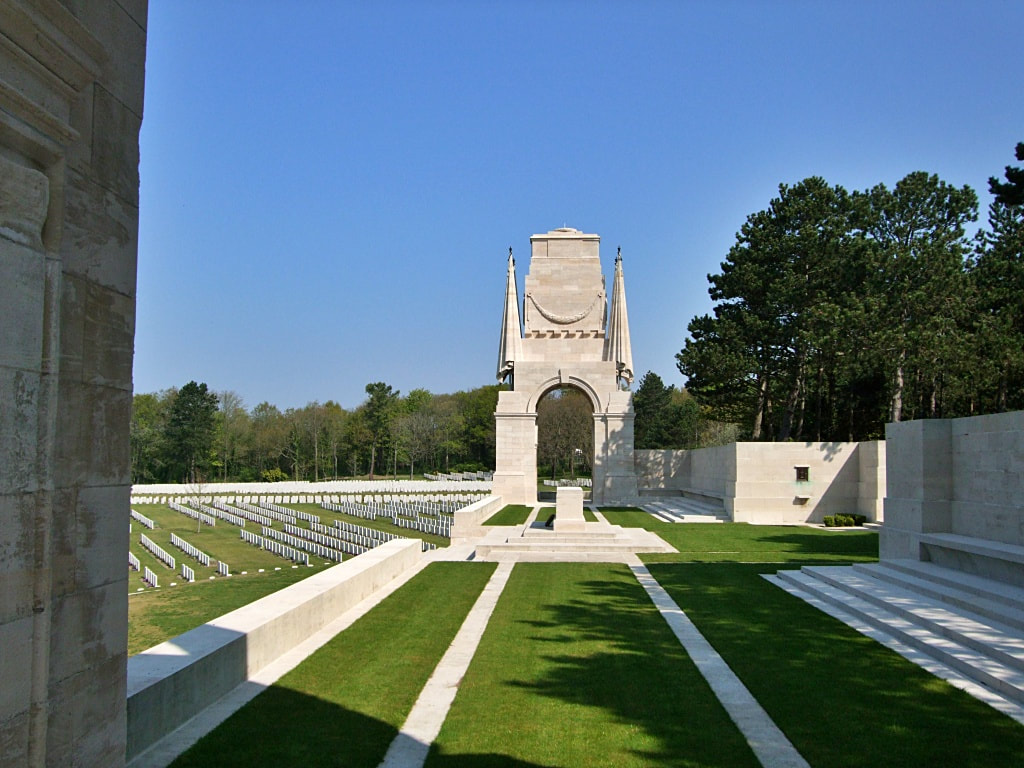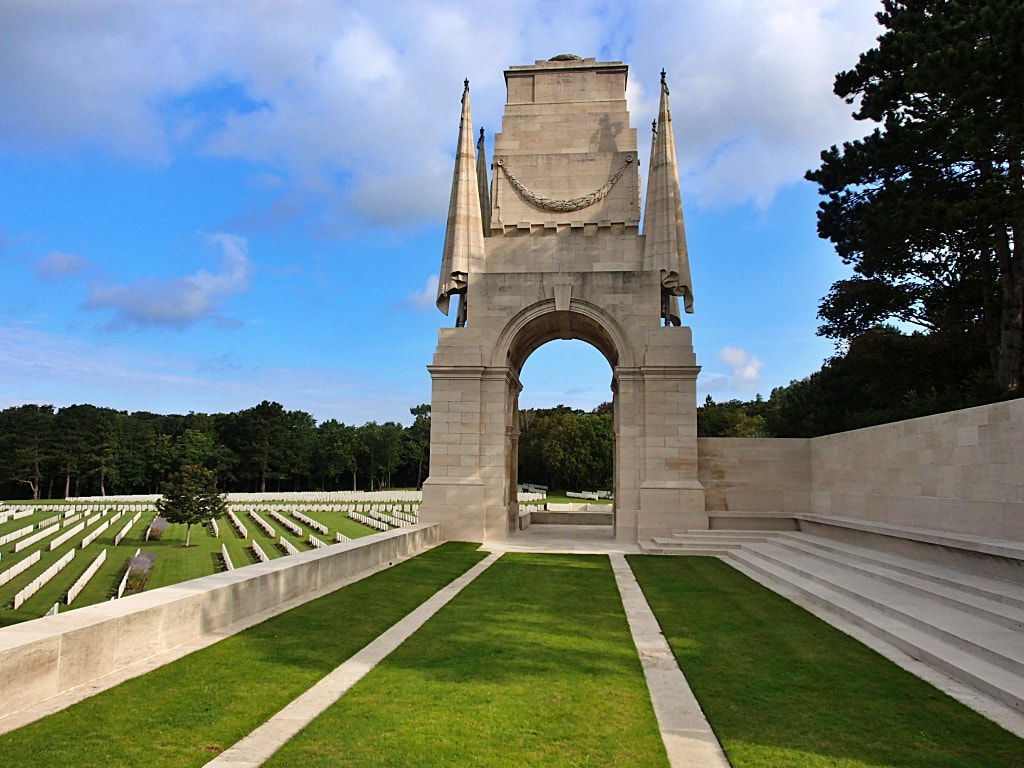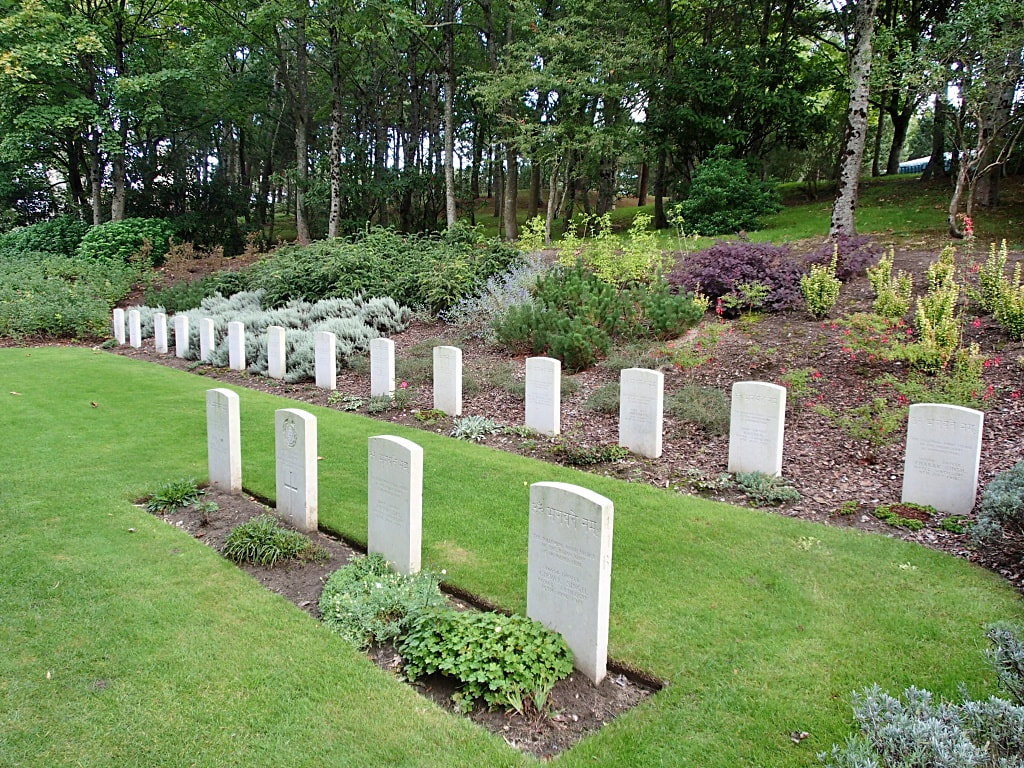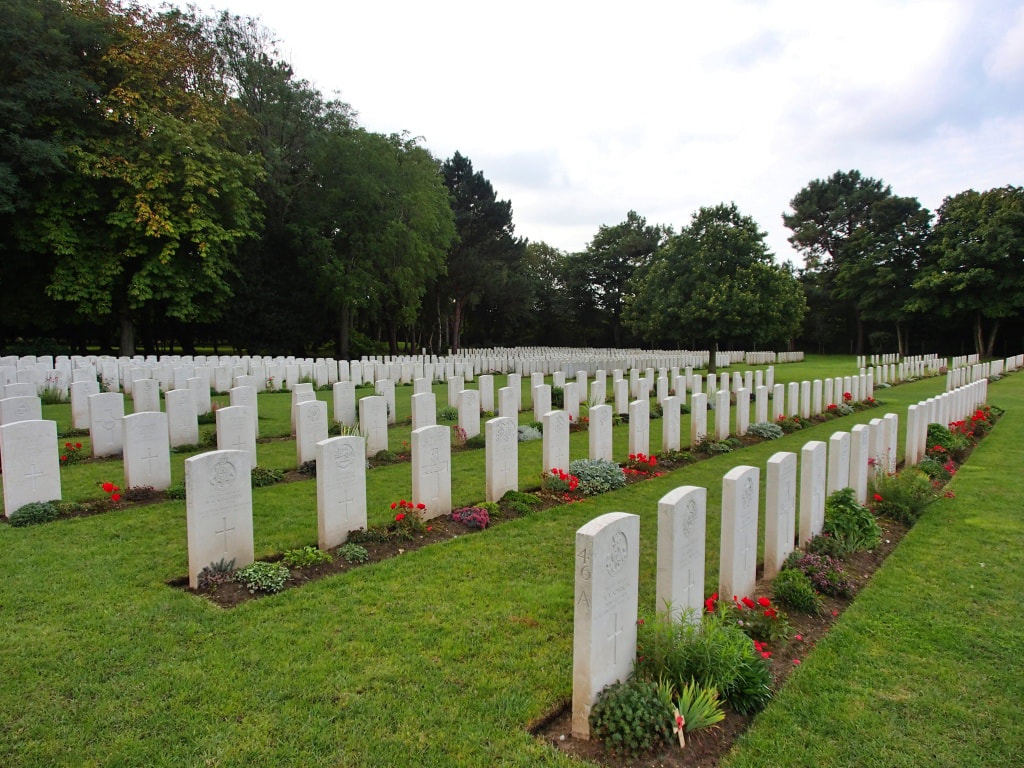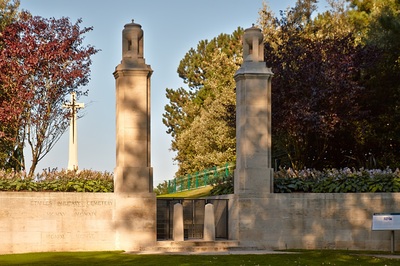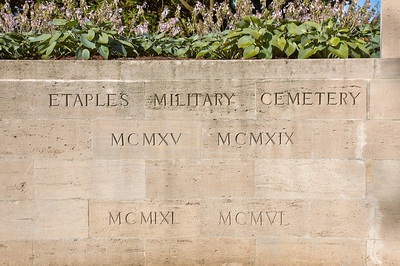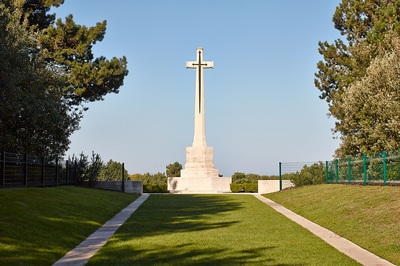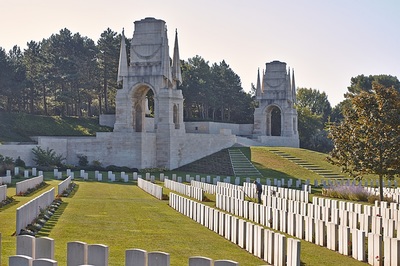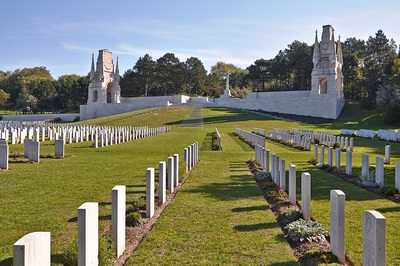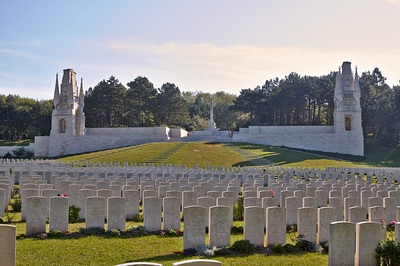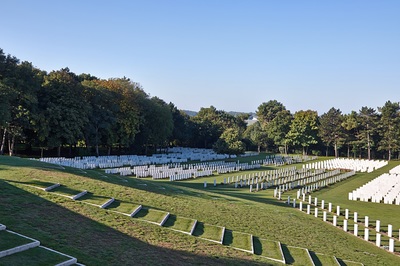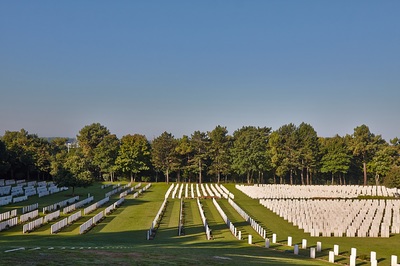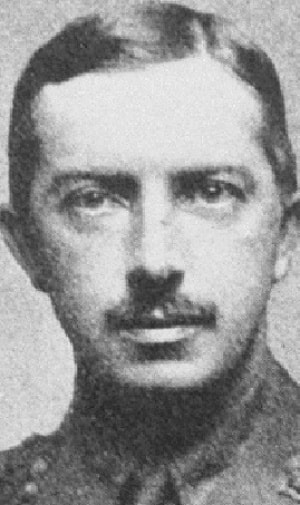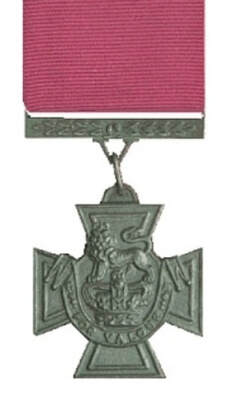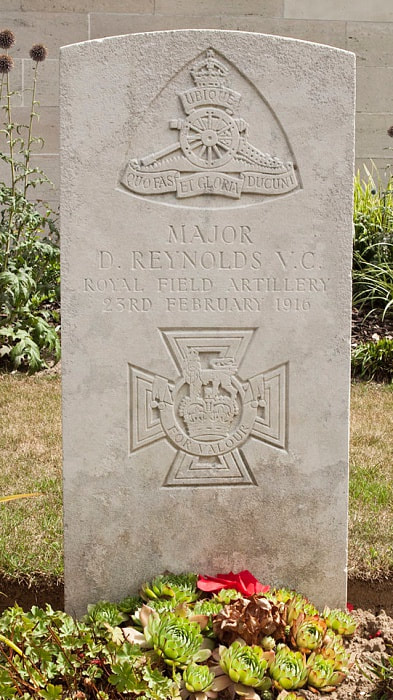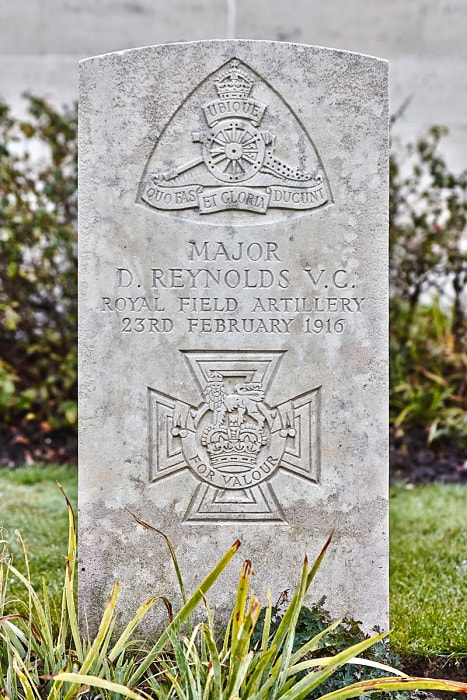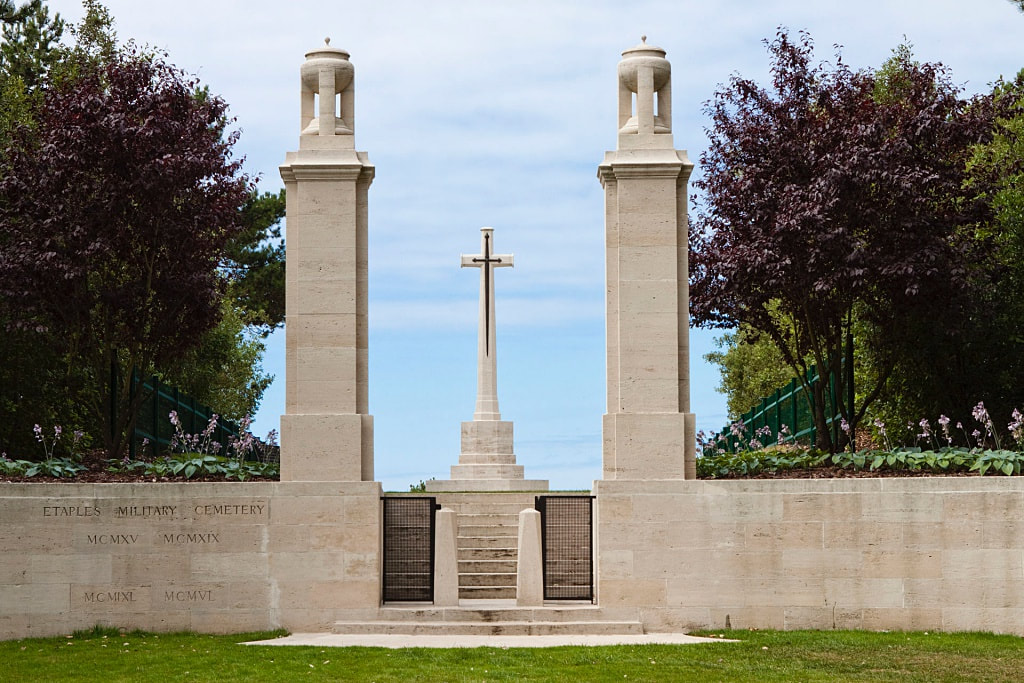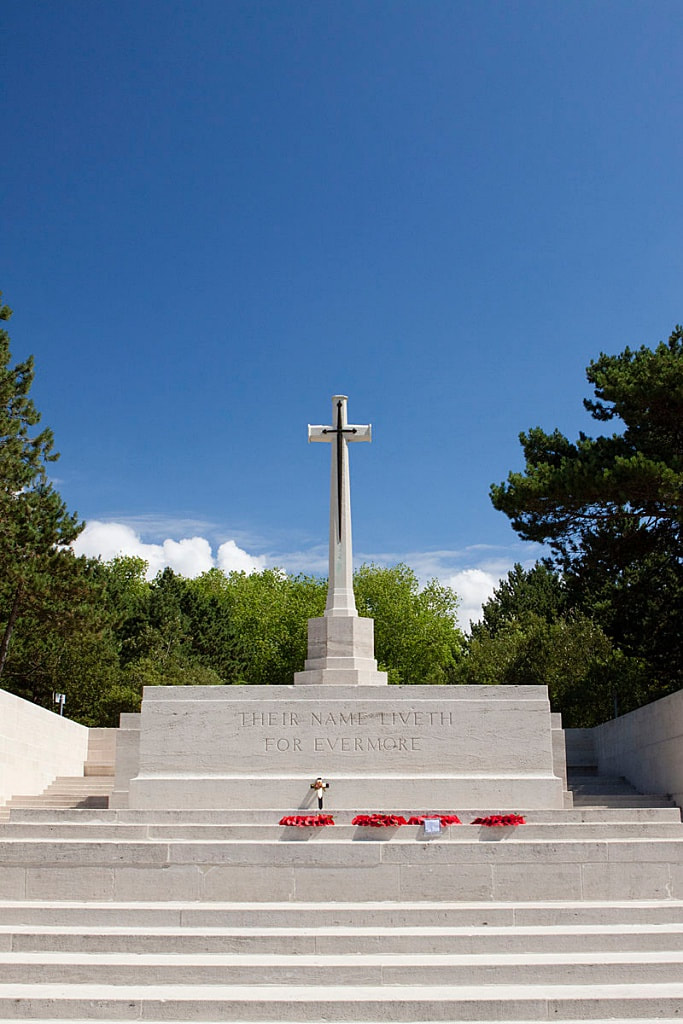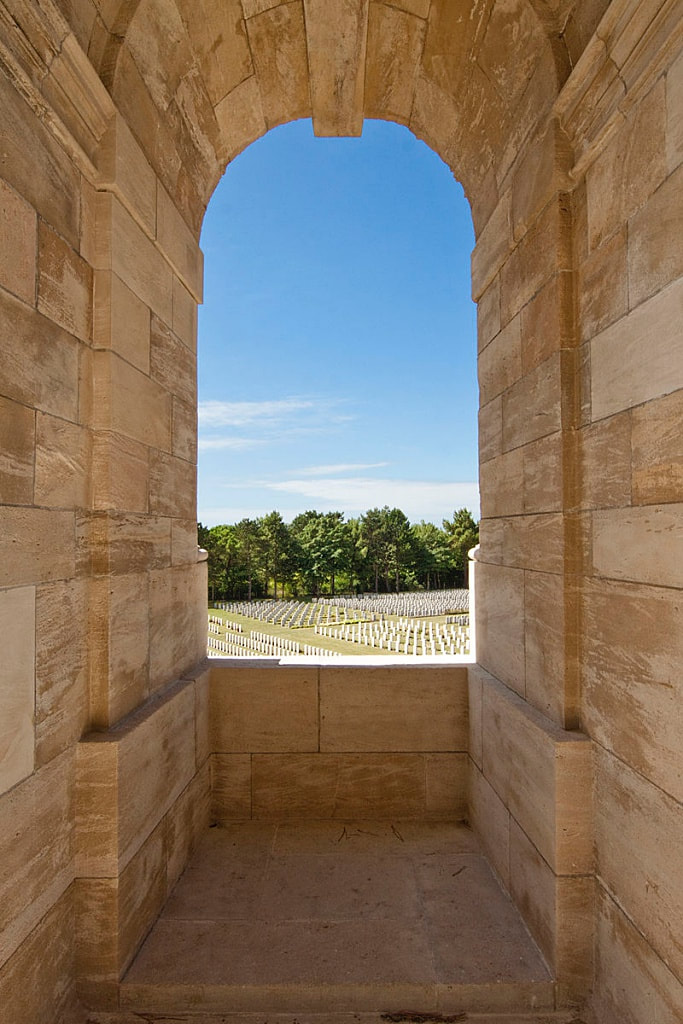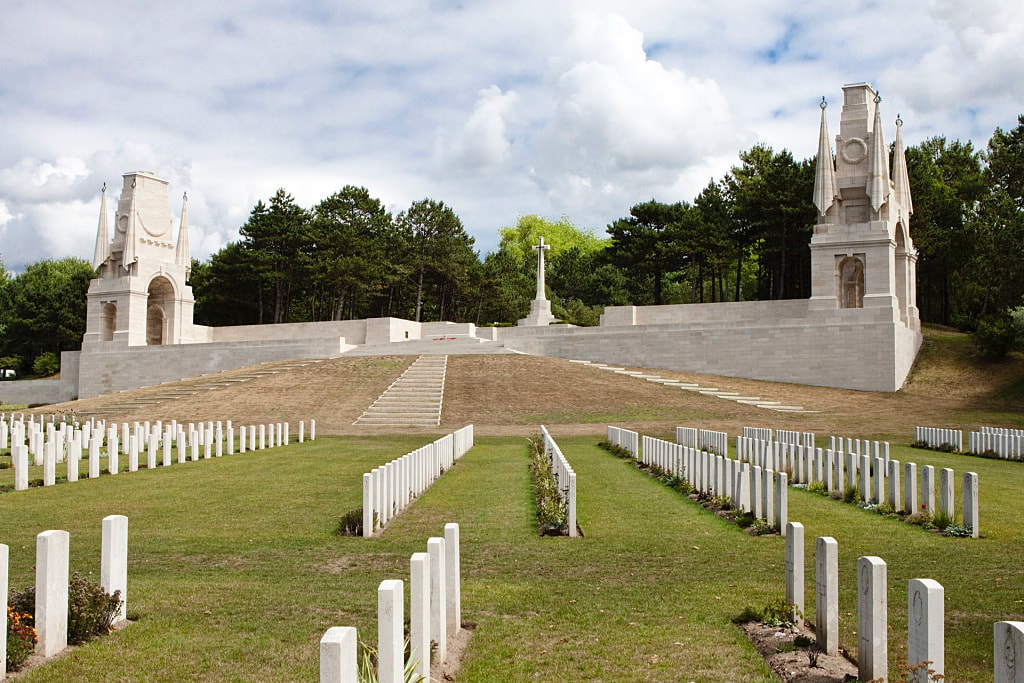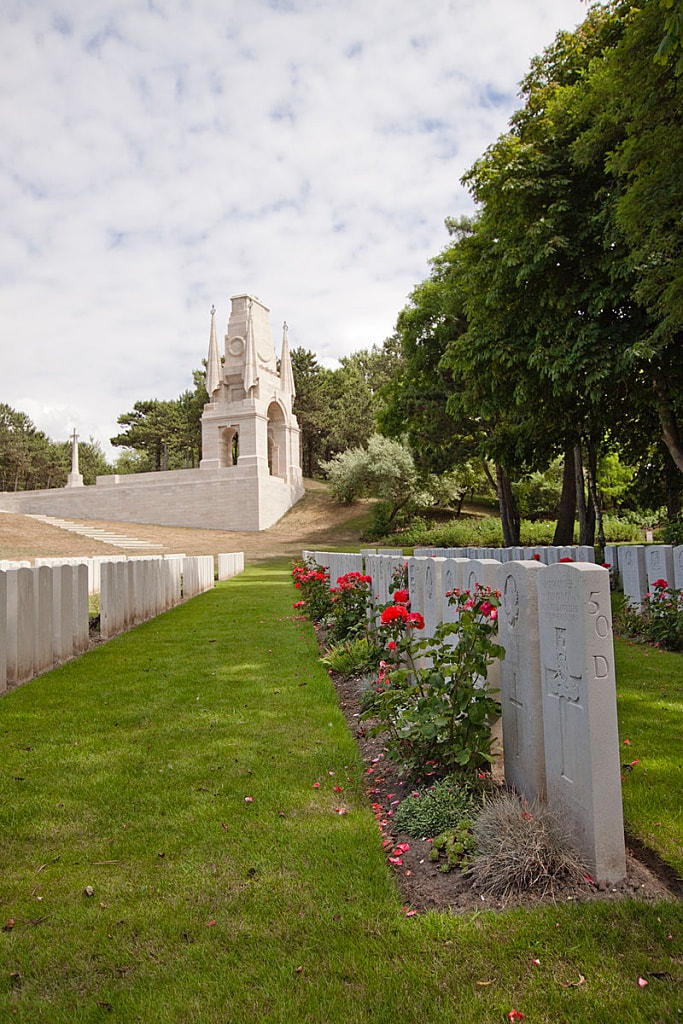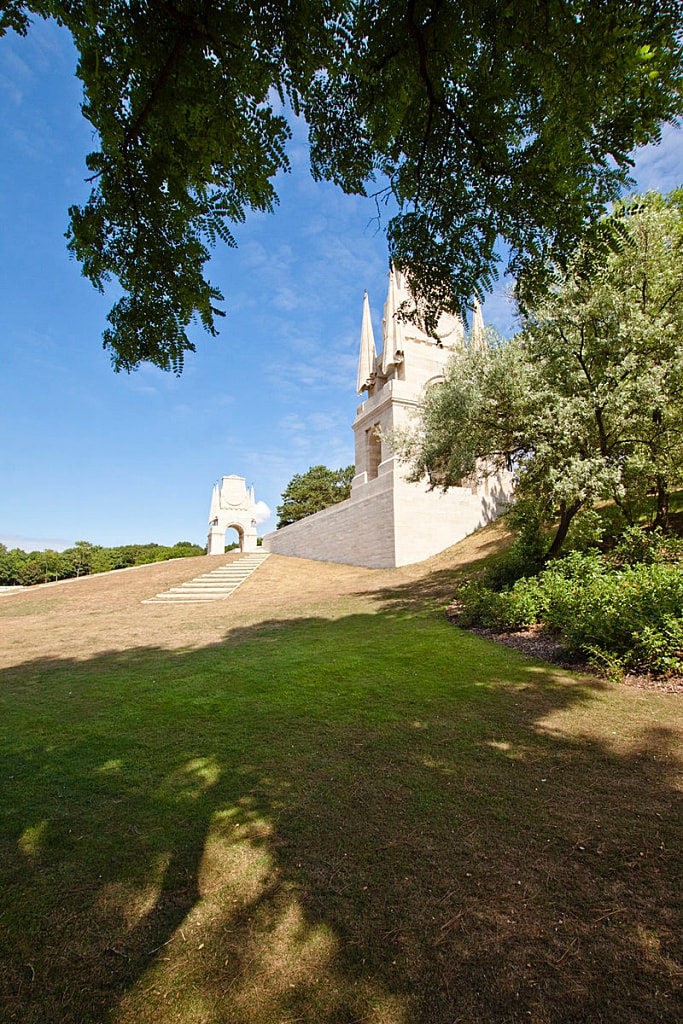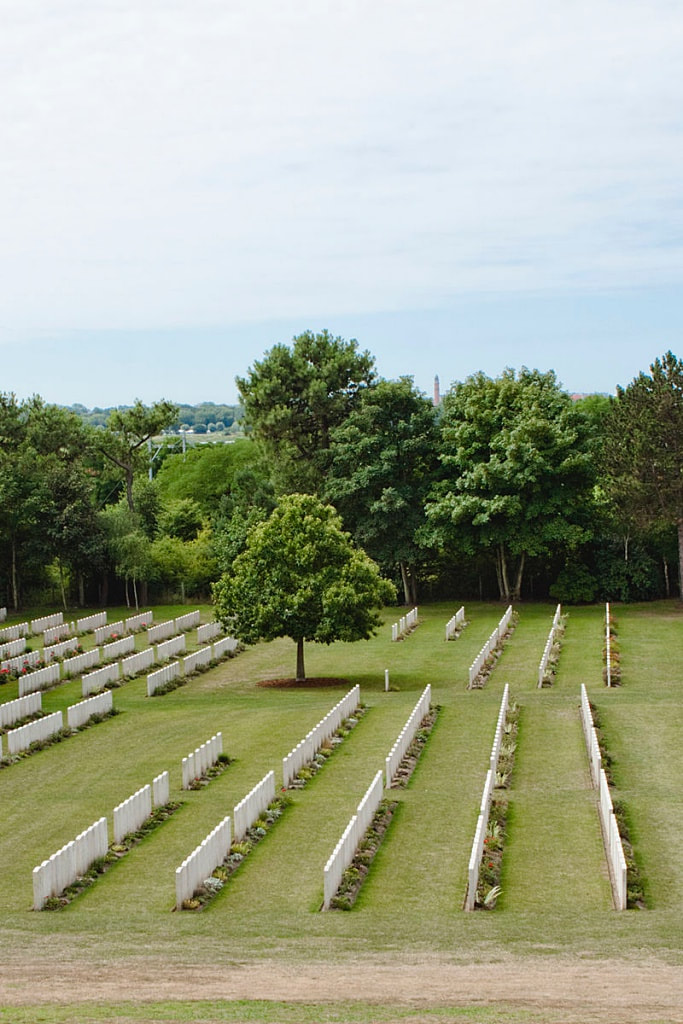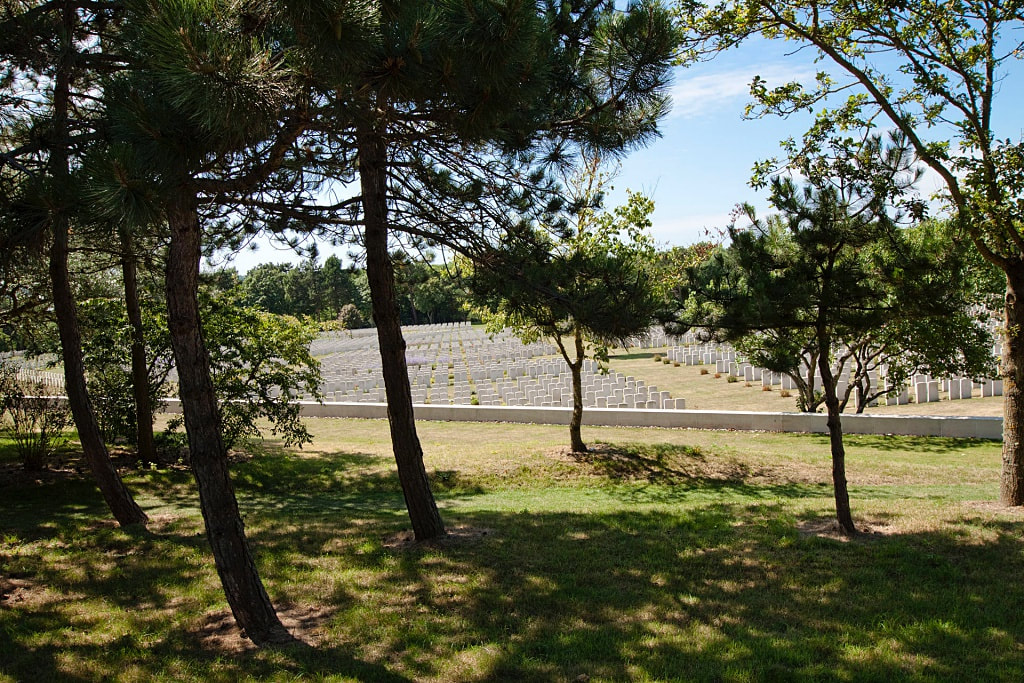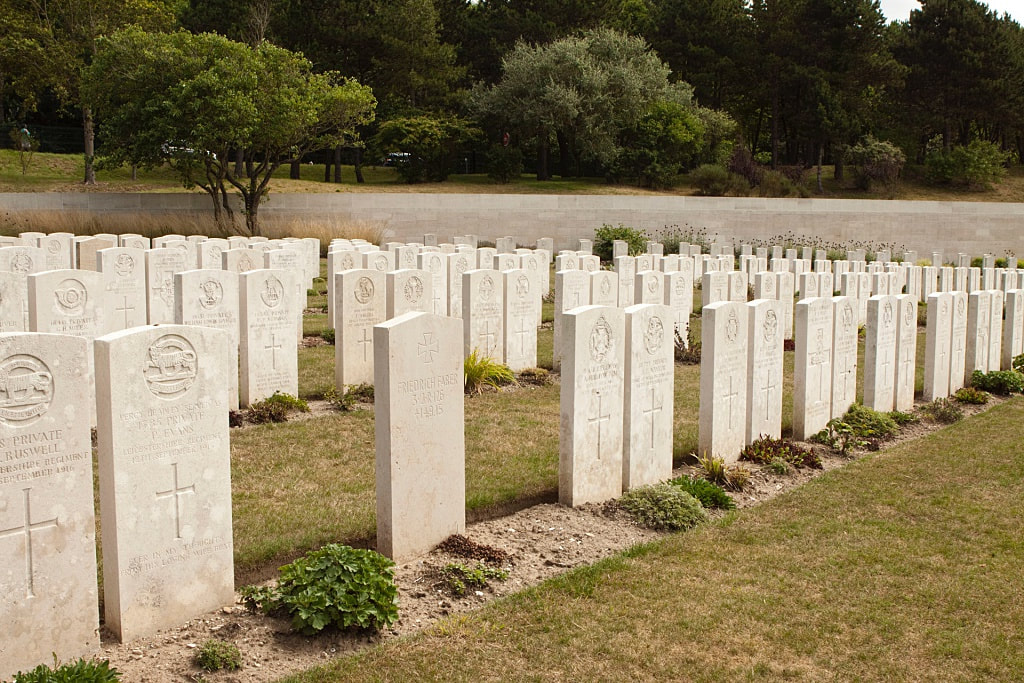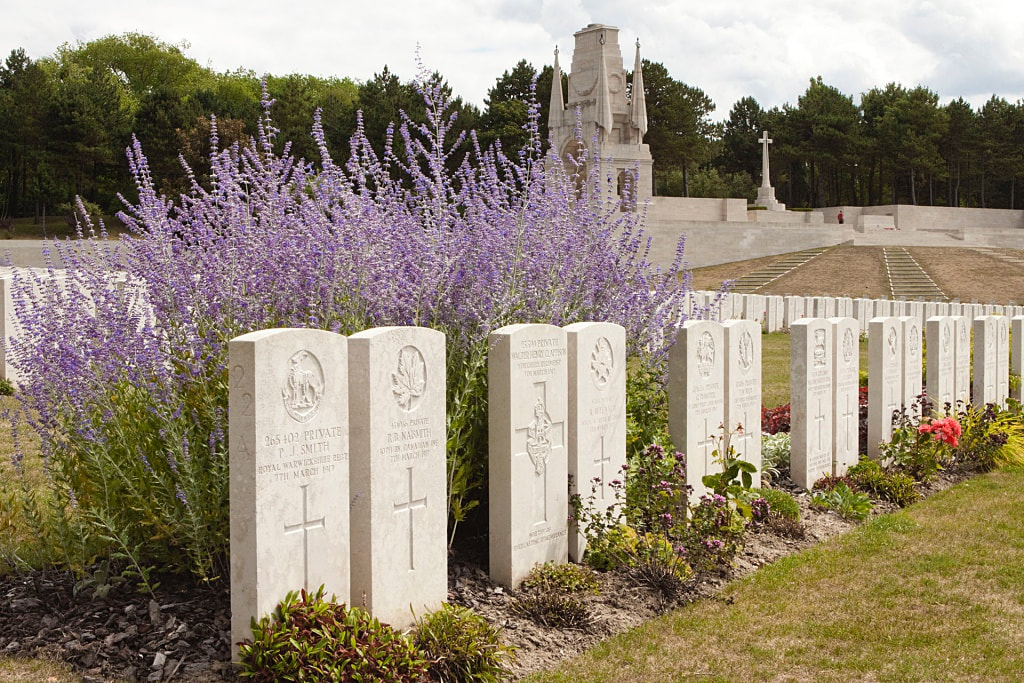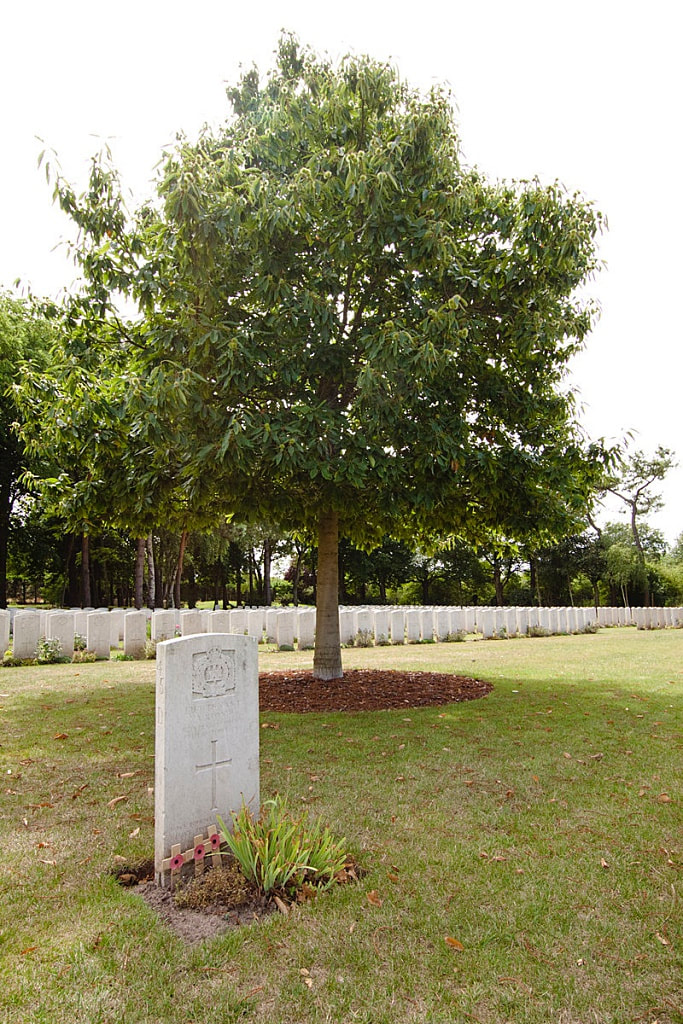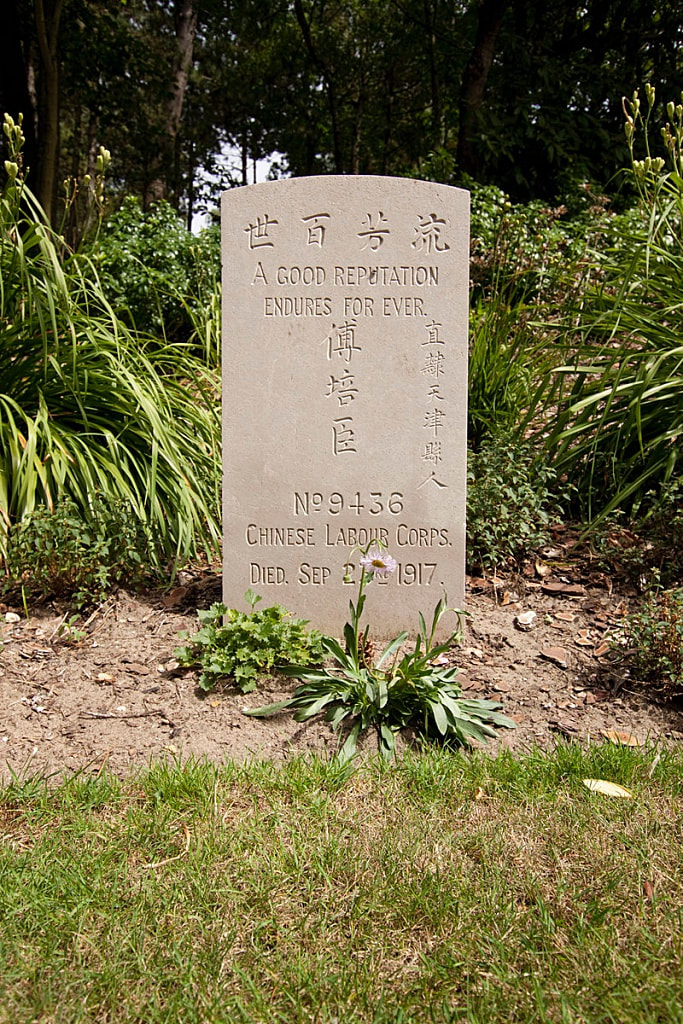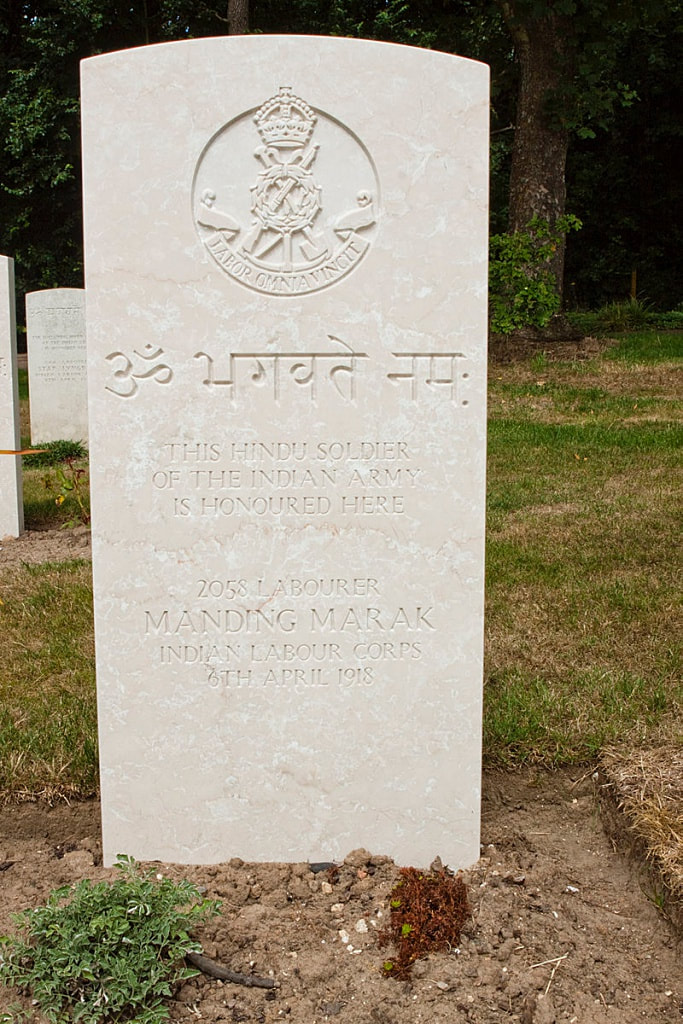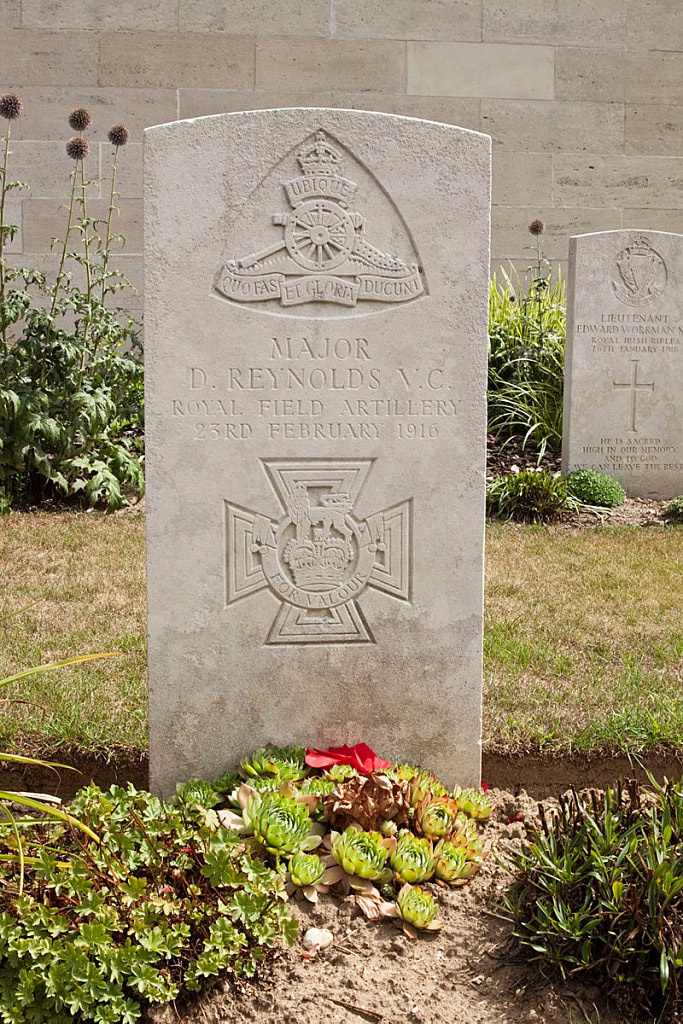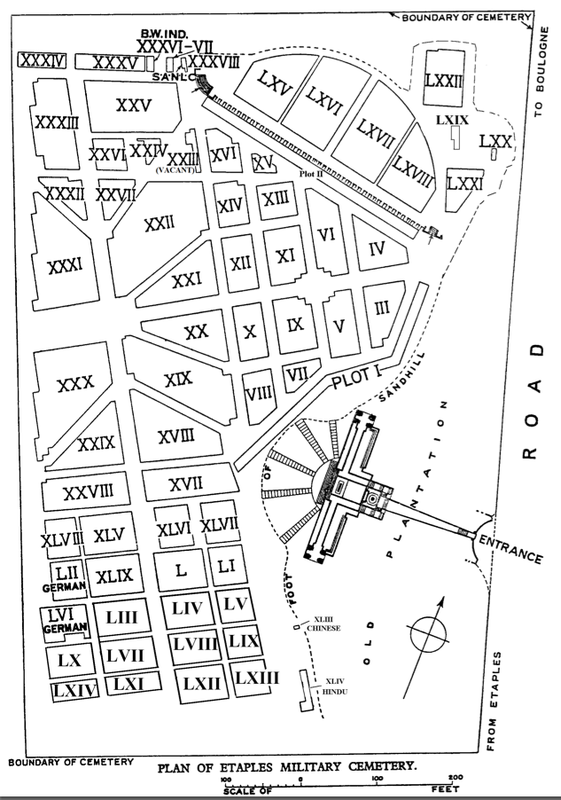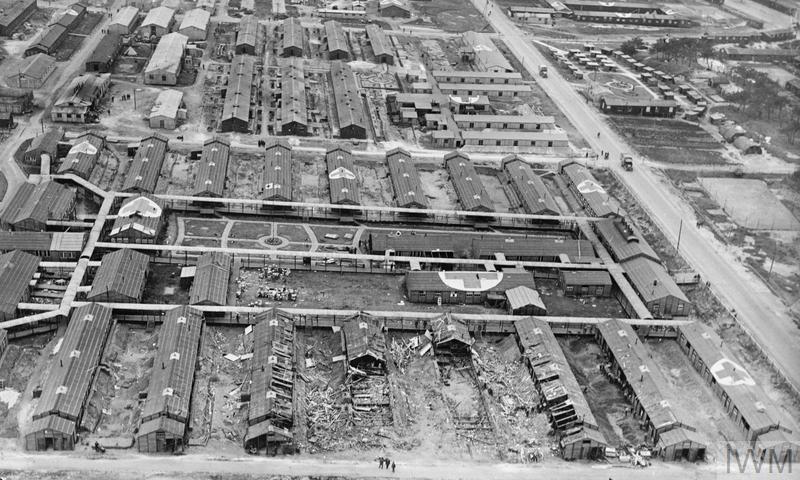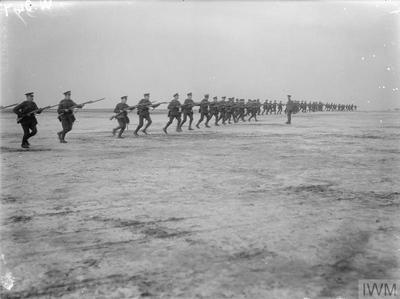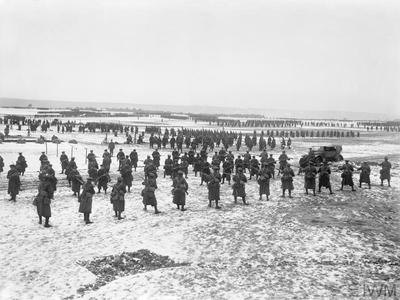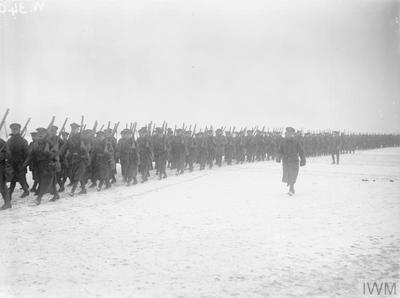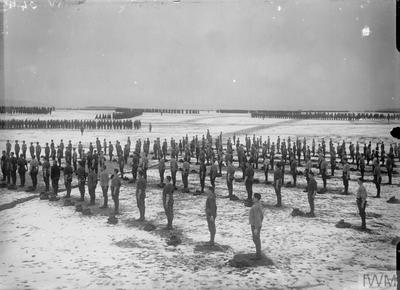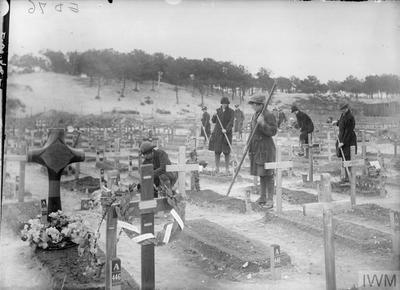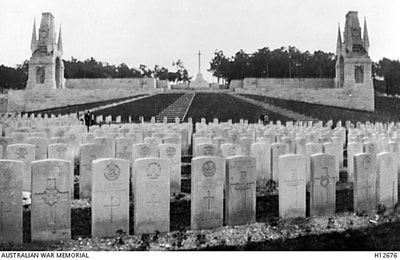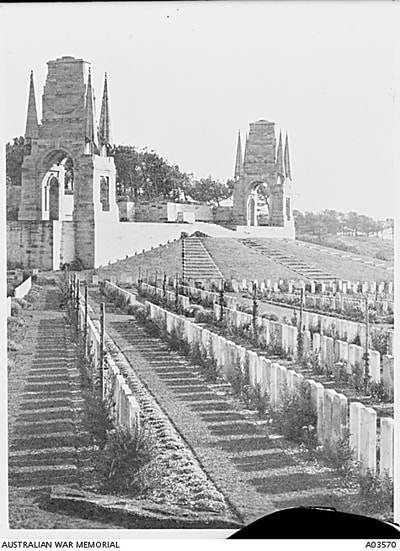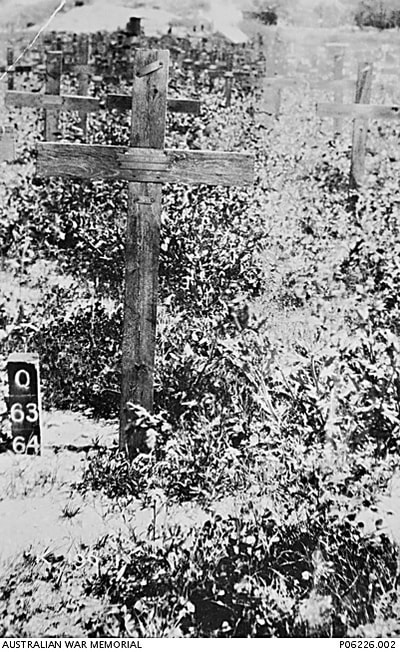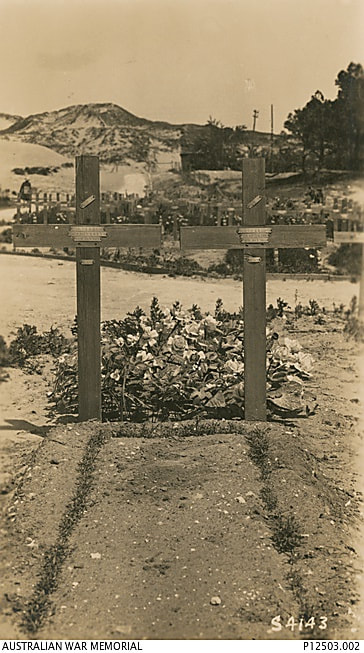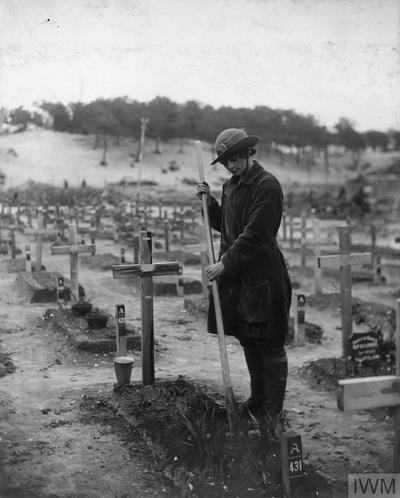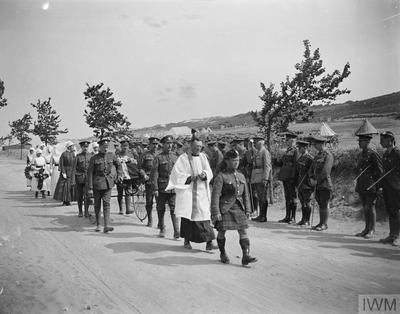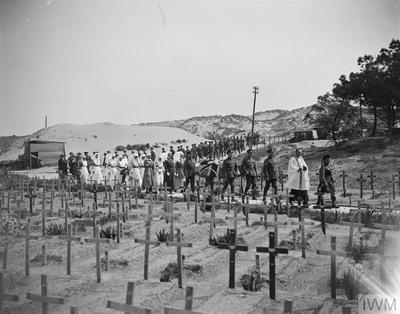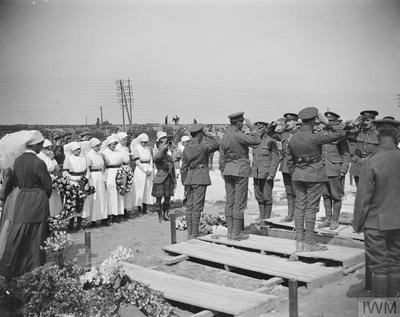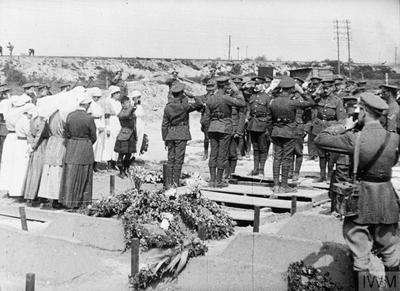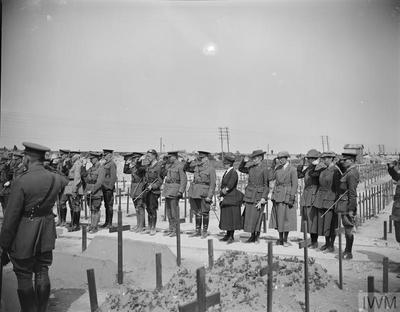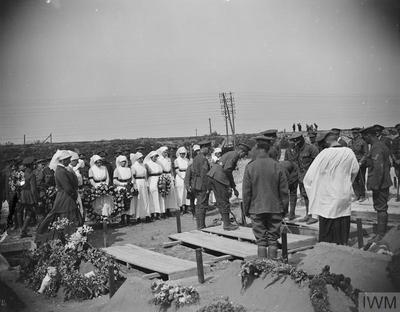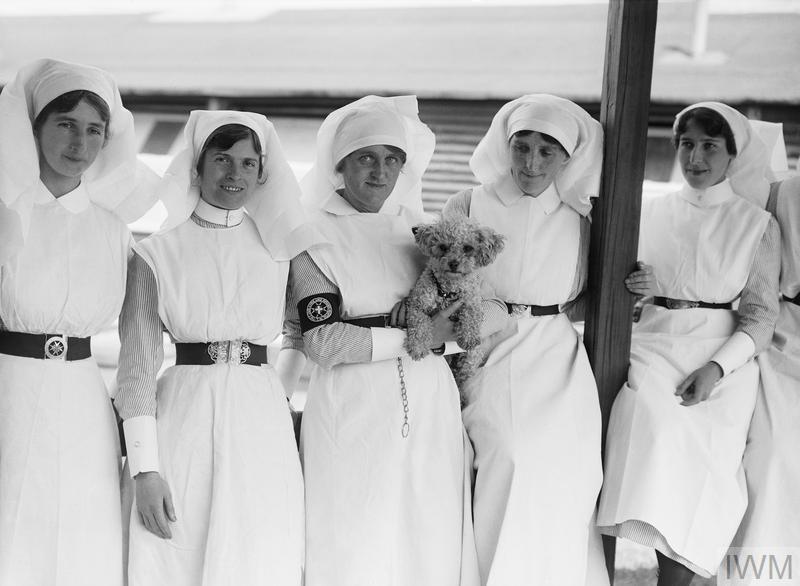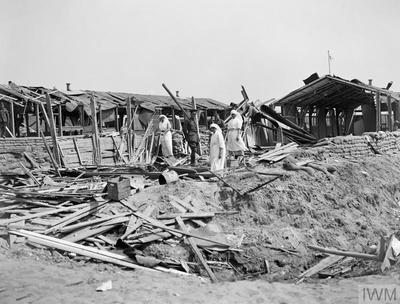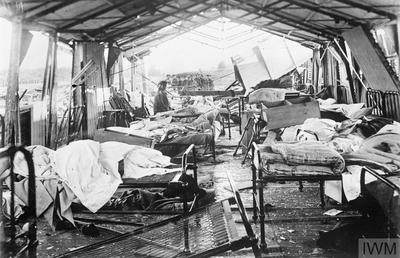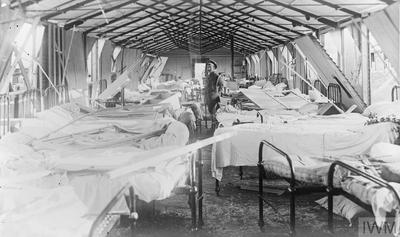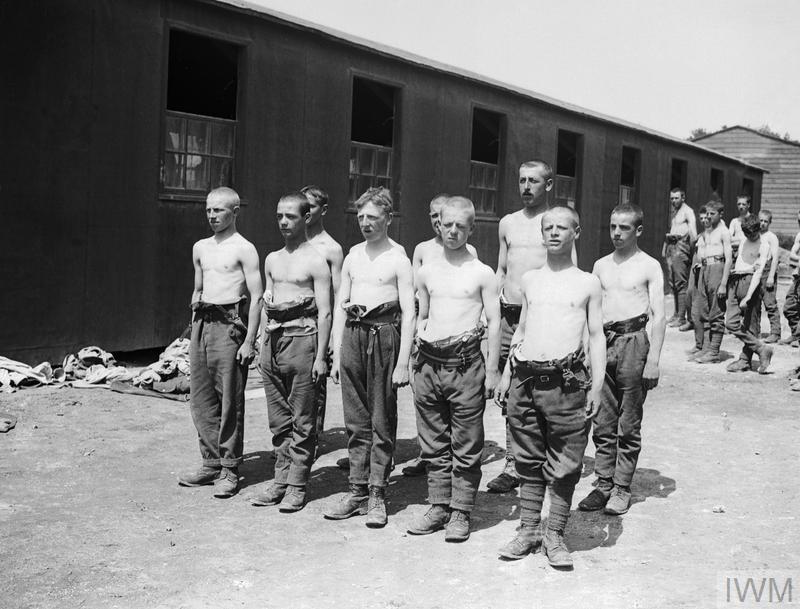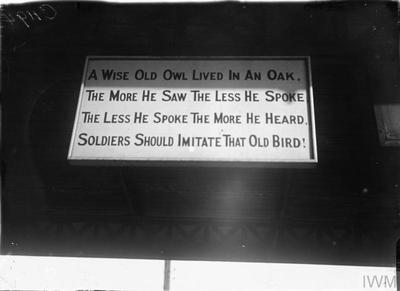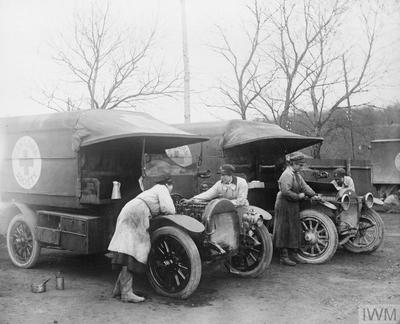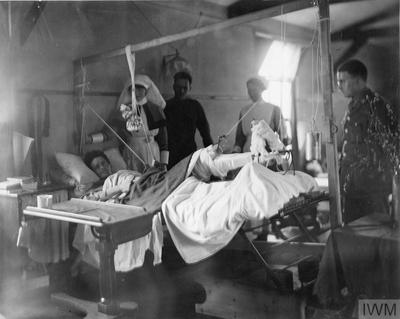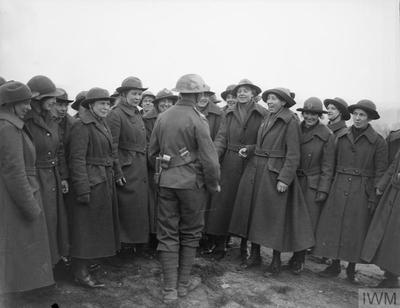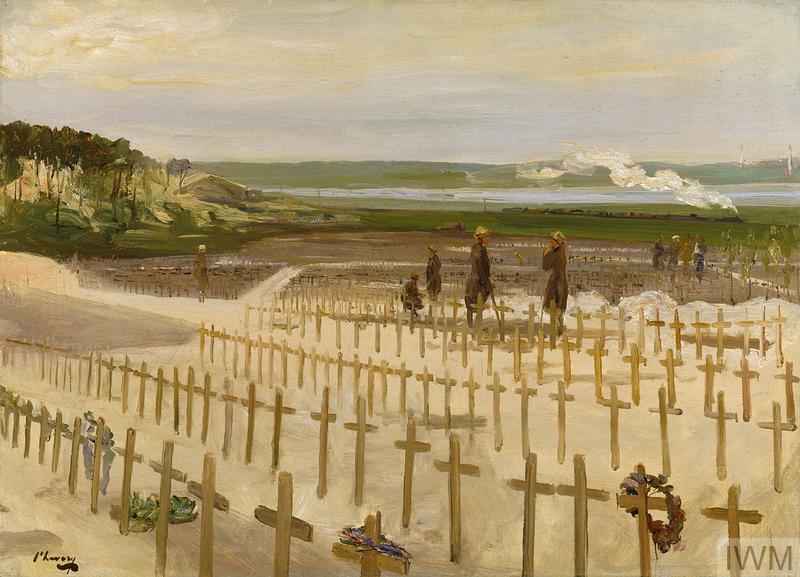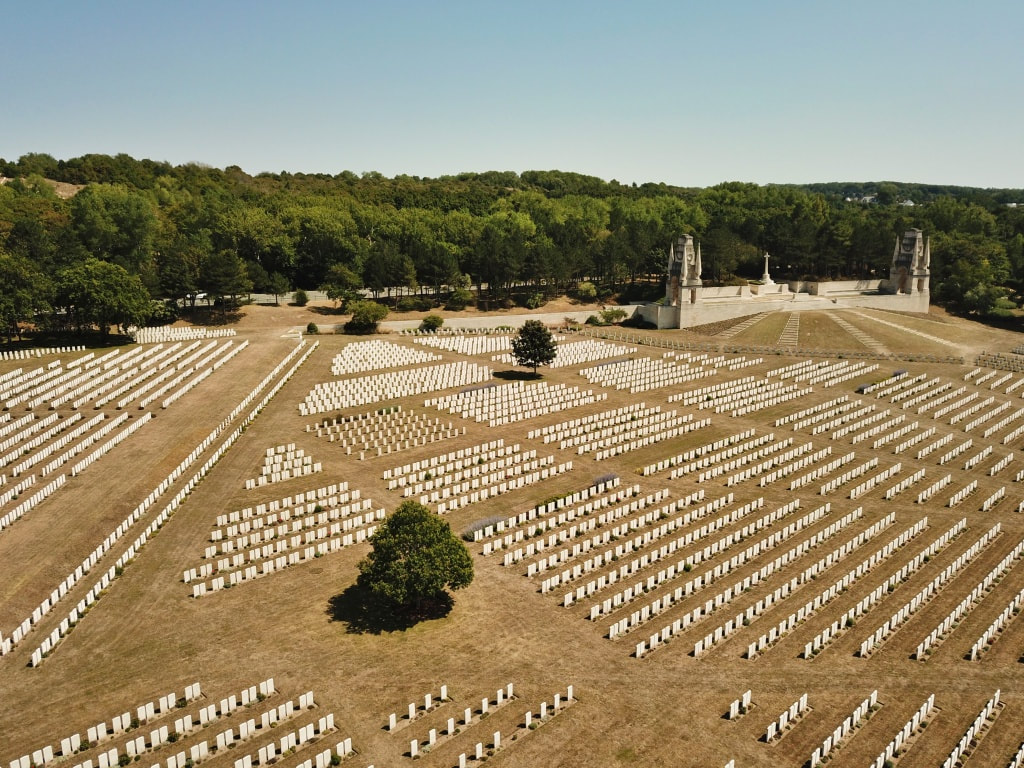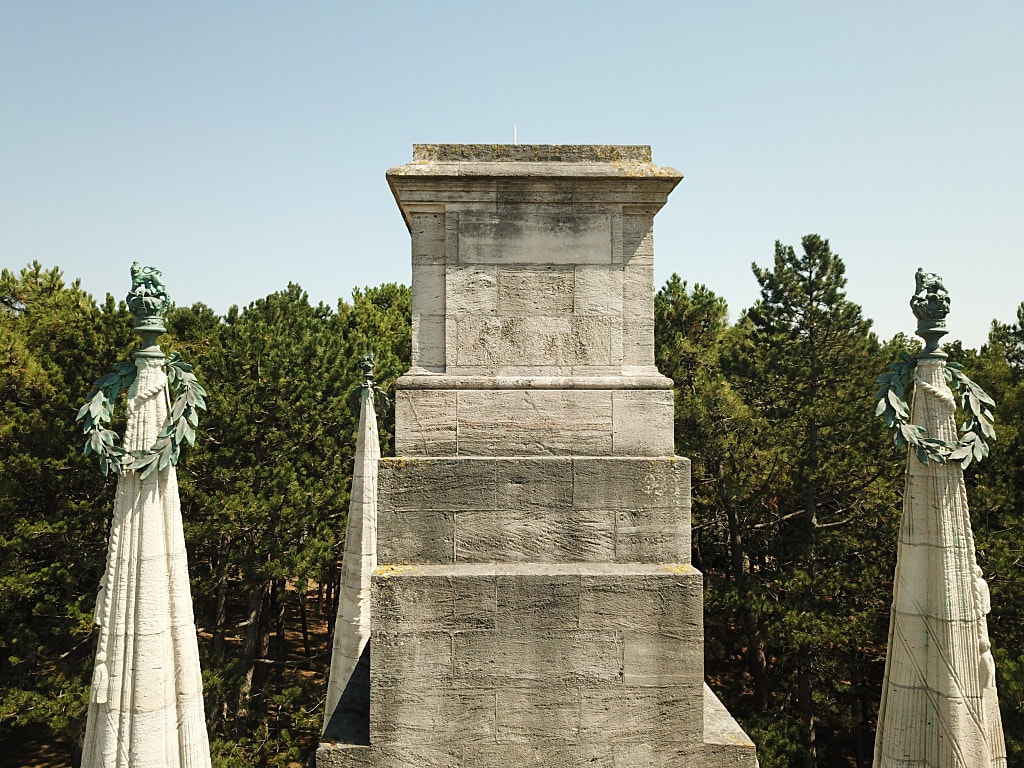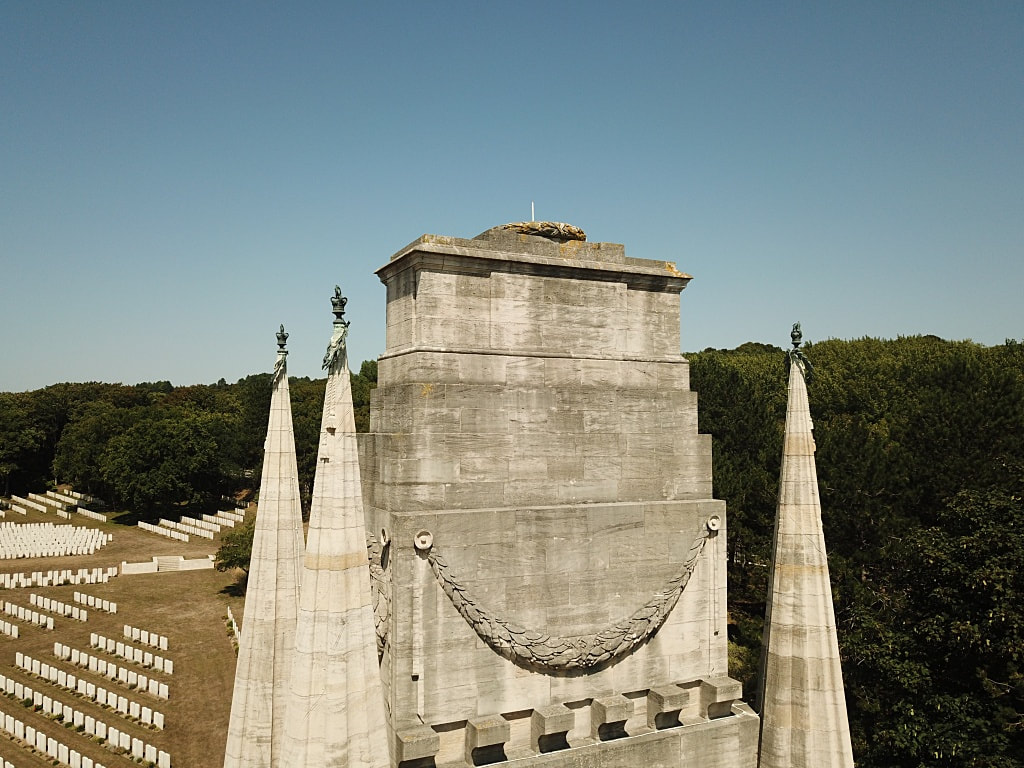ÉTAPLES MILITARY CEMETERY
Pas De Calais
France
Roll of Honour
Image above © Carl Liversage @carl_liversage
Location Information
Étaples is a town about 27 kilometres south of Boulogne. The Military Cemetery is to the north of the town, on the west side of the road to Boulogne.
Visiting Information
Wheelchair access is situated alongside the car park. It does not allow access to the upper terrace but to the cemetery
.
Historical Information
During the First World War, the area around Etaples was the scene of immense concentrations of Commonwealth reinforcement camps and hospitals. It was remote from attack, except from aircraft, and accessible by railway from both the northern or the southern battlefields. In 1917, 100,000 troops were camped among the sand dunes and the hospitals, which included eleven general, one stationary, four Red Cross hospitals and a convalescent depot, could deal with 22,000 wounded or sick. In September 1919, ten months after the Armistice, three hospitals and the Q.M.A.A.C. convalescent depot remained.
The cemetery contains 10,771 Commonwealth burials of the First World War, the earliest dating from May 1915. 35 of these burials are unidentified.
Hospitals were again stationed at Etaples during the Second World War and the cemetery was used for burials from January 1940 until the evacuation at the end of May 1940. After the war, a number of graves were brought into the cemetery from other French burial grounds. Of the 119 Second World War burials, 38 are unidentified.
Etaples Military Cemetery also contains 662 Non Commonwealth burials, mainly German, including 6 unidentifed. There are also now 5 Non World War service burials here.
The cemetery, the largest Commission cemetery in France, was designed by Sir Edwin Lutyens and George Hartley Goldsmith
Total Burials: 11,553.
World War One Identified Casualties: United Kingdom 8,776, Canada 1,143, Germany 650, Australia 464, New Zealand 261, South Africa 68, India 23, Belgium 3. Total 11,388.
World War Two Identified Casualties: United Kingdom 74, Canada 5, Australia 1, Czechoslovakia 1, New Zealand 1. Total 82.
Images in gallery below © Geerhard Joos
Major Douglas Reynolds V. C.
83rd Bde. Royal Field Artillery
23rd February 1916, aged 33.
Plot I. A. 20.
Husband of Mrs. Douglas Reynolds, of Clerkley Court, Leatherhead, Surrey.
Citation: An extract from the "London Gazette," Number 28976, dated 16th Nov., 1914, recording the award of V.C., reads:-"At Le Cateau, on 26th Aug., he took up two teams and limbered up two guns under heavy Artillery and Infantry fire, and though the enemy was within 100 yards, he got one gun away safely. At Pisseloup, on 9th Sept., he reconnoitred at close range, discovered a battery which was holding up the advance and silenced it. He was severely wounded 15th Sept., 1914."
Headstone
Cemetery images in this gallery © Werner Van Caneghem
Doing their Bit - The Voluntary Aid Detachment
by Janine Lawrence
Over the centuries the history of our country has been littered with governmental mistakes and mishaps. How refreshing then, that in 1908 the new Secretary of State for War, Lord Haldane, undertook reforms in the army which were to have far-reaching effects.
He established a new part-time army of volunteers who were fully-trained soldiers in full-time jobs and who were organised on a county system. This Territorial Force became jokingly known as the 'Saturday Night Soldiers' as the young men who joined were taught to shoulder arms at weekly meetings and drills. They even attended summer camp and many 'Terriers' were at camp when war was declared in August 1914.
In 1909, with unbelievable foresight, the War Office issued a 'Scheme for the Organisation of Voluntary Aid in England and Wales' which recognised the need to provide sufficient medical backup to supplement the Territorial Force in the event of war. Ultimate efficiency would not be realised unless all voluntary aid was co-ordinated and the Territorial Associations were directed to entrust the work to the British Red Cross which had also adopted the county system of organisation. They joined up with the Order of St John of Jerusalem and thus, the organisation known as the Voluntary Aid Detachment was born.
Detachments were divided into those for men and those for women. Men's detachments numbered 56 lead by a commandant and comprising a medical officer, a quartermaster, a pharmacist and four section leaders each responsible for 12 men. They were usually responsible for transport and converting suitable buildings into hospitals and clearing stations and would also act as stretcher-bearers and male nurses if required. After enrolment the men studied first aid and were lectured in the various duties connected with transport and camps.
The women's detachments were less than half the strength of the men. They were also led by a commandant, who could either be male or female and not necessarily a doctor, a quartermaster, a trained nurse as a lady superintendent and 20 women of whom four had to be qualified cooks. It was felt the women's detachments would be better served to the 'less arduous' task of forming railway rest stations where they could prepare and serve meals for sick and wounded soldiers. It was obvious they were seen more as domestic assistants than nurses! However, they were given lectures in first aid, home nursing, hygiene and cookery and were occasionally given training in infirmaries. They were taught to identify suitable buildings for use as temporary hospitals and how to obtain equipment and supplies.
Within a year membership numbered somewhere around 6000 with over 2,500 detachments. These numbers increased considerably after the outbreak of war in 1914 and numbers rose to over 74,000, two-thirds of whom were women and girls.
As men were called away to answer their country's call it fell upon the women to fill their shoes in whatever way they could. Initially it was mostly middle-class women who were eager to 'do their bit' and they took on roles such as ambulance drivers, welfare officers, fundraisers, civil defence workers and even letter writers for the illiterate. It is interesting to note that the novelist, Agatha Christie was a VAD and worked in a hospital pharmacy where she learned about poisons!
The military authorities were reluctant at this early stage to accept VADs on the front line, perhaps thinking that the battlefield was no place for a woman. However, this restriction was lifted in 1915 and women volunteers over the age of twenty three and with more than three months experience were allowed to go to the Western Front, Gallipoli and Mesopotamia. Eventually VAD's were also sent to the Eastern Front.
Before the outbreak of war some VADs had taken short nursing courses for which they were awarded certificates. Qualified nurses had undertaken three years training and were understandably suspicious of these short courses, referring to the volunteers as 'ignorant amateurs'. Quarrels broke out and there are even reports of open conflict before the new spirit of unity in time of war was felt and working together for mutual benefit was the order of the day.
The VAD's became very active in the war effort using influence to transport themselves to the conflicts in France to care for the sick and wounded and thus carving out for themselves a clear role as nurses or orderlies in hospitals at home and in the theatres of war. By 1916 their numbers had increased to 80,000.
In 1917 clear regulations were laid down by the British Red Cross which governed the employment of nursing VAD's in military hospitals. Age limits were specified and volunteers should be between 21 and 48 years of age for home service and 23 and 42 for foreign. They were to be appointed for one month on probation during which time they were assessed for suitability by the matron. They then had to sign an agreement to serve for six months or the duration of the war, at home or abroad. Salary would be £20 per annum rising to £22.10.0 for those who signed on for another six months at the end of their current contract. Increments of a further £2.10.0 would be paid every six months until probationers reached the maximum of £30 per annum.
It was also laid down that VAD's should work under fully trained nurses with duties including sweeping, dusting, polishing, cleaning, washing patients' crockery, sorting linen and any nursing duties allotted by the matron.
Meanwhile, VAD hospitals were being set up in Blighty and were mostly located in large houses loaned for the purpose by their owners. Gustard Wood at Wheathampstead and The Bury at King's Walden are just two Hertfordshire premises used. The Council School in Royston and the former mental hospital, Napsbury in Colney Heath are examples of institutes put into service.
These hospitals received the sum of three shillings per day per patient from the War Office and were expected to raise additional funds themselves. As everyone was keen to be seen to help the war effort this was not difficult and local newspapers regularly featured lists of donations received - obviously anonymity did not seem to be the case!
Many women returning home after the conflict ended undertook formal nurse training and registration with the General Nursing Council. Others tried to pick up the threads of their former lives. What must be certain is that life could never have been the same for any of them again. The sight, smell and fear of war must have been imprinted on every mind bringing about a change in the lives of women which would grow and grow over the following years.
Our thanks to Janine Lawrence for permission to use this article.
© Janine Lawrence
by Janine Lawrence
Over the centuries the history of our country has been littered with governmental mistakes and mishaps. How refreshing then, that in 1908 the new Secretary of State for War, Lord Haldane, undertook reforms in the army which were to have far-reaching effects.
He established a new part-time army of volunteers who were fully-trained soldiers in full-time jobs and who were organised on a county system. This Territorial Force became jokingly known as the 'Saturday Night Soldiers' as the young men who joined were taught to shoulder arms at weekly meetings and drills. They even attended summer camp and many 'Terriers' were at camp when war was declared in August 1914.
In 1909, with unbelievable foresight, the War Office issued a 'Scheme for the Organisation of Voluntary Aid in England and Wales' which recognised the need to provide sufficient medical backup to supplement the Territorial Force in the event of war. Ultimate efficiency would not be realised unless all voluntary aid was co-ordinated and the Territorial Associations were directed to entrust the work to the British Red Cross which had also adopted the county system of organisation. They joined up with the Order of St John of Jerusalem and thus, the organisation known as the Voluntary Aid Detachment was born.
Detachments were divided into those for men and those for women. Men's detachments numbered 56 lead by a commandant and comprising a medical officer, a quartermaster, a pharmacist and four section leaders each responsible for 12 men. They were usually responsible for transport and converting suitable buildings into hospitals and clearing stations and would also act as stretcher-bearers and male nurses if required. After enrolment the men studied first aid and were lectured in the various duties connected with transport and camps.
The women's detachments were less than half the strength of the men. They were also led by a commandant, who could either be male or female and not necessarily a doctor, a quartermaster, a trained nurse as a lady superintendent and 20 women of whom four had to be qualified cooks. It was felt the women's detachments would be better served to the 'less arduous' task of forming railway rest stations where they could prepare and serve meals for sick and wounded soldiers. It was obvious they were seen more as domestic assistants than nurses! However, they were given lectures in first aid, home nursing, hygiene and cookery and were occasionally given training in infirmaries. They were taught to identify suitable buildings for use as temporary hospitals and how to obtain equipment and supplies.
Within a year membership numbered somewhere around 6000 with over 2,500 detachments. These numbers increased considerably after the outbreak of war in 1914 and numbers rose to over 74,000, two-thirds of whom were women and girls.
As men were called away to answer their country's call it fell upon the women to fill their shoes in whatever way they could. Initially it was mostly middle-class women who were eager to 'do their bit' and they took on roles such as ambulance drivers, welfare officers, fundraisers, civil defence workers and even letter writers for the illiterate. It is interesting to note that the novelist, Agatha Christie was a VAD and worked in a hospital pharmacy where she learned about poisons!
The military authorities were reluctant at this early stage to accept VADs on the front line, perhaps thinking that the battlefield was no place for a woman. However, this restriction was lifted in 1915 and women volunteers over the age of twenty three and with more than three months experience were allowed to go to the Western Front, Gallipoli and Mesopotamia. Eventually VAD's were also sent to the Eastern Front.
Before the outbreak of war some VADs had taken short nursing courses for which they were awarded certificates. Qualified nurses had undertaken three years training and were understandably suspicious of these short courses, referring to the volunteers as 'ignorant amateurs'. Quarrels broke out and there are even reports of open conflict before the new spirit of unity in time of war was felt and working together for mutual benefit was the order of the day.
The VAD's became very active in the war effort using influence to transport themselves to the conflicts in France to care for the sick and wounded and thus carving out for themselves a clear role as nurses or orderlies in hospitals at home and in the theatres of war. By 1916 their numbers had increased to 80,000.
In 1917 clear regulations were laid down by the British Red Cross which governed the employment of nursing VAD's in military hospitals. Age limits were specified and volunteers should be between 21 and 48 years of age for home service and 23 and 42 for foreign. They were to be appointed for one month on probation during which time they were assessed for suitability by the matron. They then had to sign an agreement to serve for six months or the duration of the war, at home or abroad. Salary would be £20 per annum rising to £22.10.0 for those who signed on for another six months at the end of their current contract. Increments of a further £2.10.0 would be paid every six months until probationers reached the maximum of £30 per annum.
It was also laid down that VAD's should work under fully trained nurses with duties including sweeping, dusting, polishing, cleaning, washing patients' crockery, sorting linen and any nursing duties allotted by the matron.
Meanwhile, VAD hospitals were being set up in Blighty and were mostly located in large houses loaned for the purpose by their owners. Gustard Wood at Wheathampstead and The Bury at King's Walden are just two Hertfordshire premises used. The Council School in Royston and the former mental hospital, Napsbury in Colney Heath are examples of institutes put into service.
These hospitals received the sum of three shillings per day per patient from the War Office and were expected to raise additional funds themselves. As everyone was keen to be seen to help the war effort this was not difficult and local newspapers regularly featured lists of donations received - obviously anonymity did not seem to be the case!
Many women returning home after the conflict ended undertook formal nurse training and registration with the General Nursing Council. Others tried to pick up the threads of their former lives. What must be certain is that life could never have been the same for any of them again. The sight, smell and fear of war must have been imprinted on every mind bringing about a change in the lives of women which would grow and grow over the following years.
Our thanks to Janine Lawrence for permission to use this article.
© Janine Lawrence

